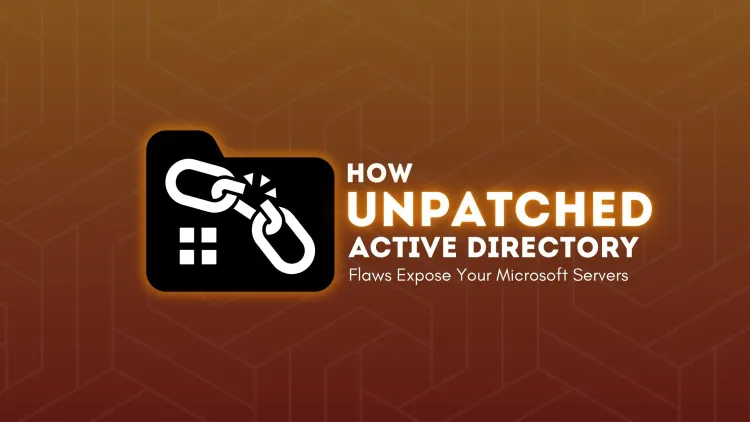How Unpatched Active Directory Flaws Expose Your Microsoft Servers | The Silent Threat
Microsoft’s Active Directory faces a critical flaw with CVE-2024-49113, a vulnerability in LDAP that can crash unpatched Windows servers or enable remote code execution. Despite patches released in December 2024, many systems remain at risk. This flaw allows attackers to bypass traditional defense steps and target domain controllers directly. Experts urge immediate patching or implementation of LDAP firewalls to mitigate the risk. Organizations must prioritize robust cybersecurity strategies to safeguard sensitive data and maintain operational integrity.

In the ever-evolving world of cybersecurity, Microsoft Windows servers face a critical threat due to an Active Directory Lightweight Directory Access Protocol (LDAP) vulnerability. This flaw, tracked as CVE-2024-49113, can enable attackers to crash multiple unpatched servers simultaneously. Despite being patched in December 2024, experts warn that many organizations remain at risk.
Understanding the LDAP Vulnerability
What is LDAP?
LDAP (Lightweight Directory Access Protocol) is a protocol used in Microsoft’s Active Directory to access and manage directory services information. It's integral for maintaining enterprise networks.
CVE-2024-49113 and CVE-2024-49112
The vulnerability, CVE-2024-49113, originally thought to enable denial-of-service (DoS) attacks, was found to potentially allow remote code execution (RCE) and crash any unpatched Windows server. A related bug, CVE-2024-49112, carries a CVSS score of 9.8, underscoring its severity.
| Vulnerability | Impact | Severity |
|---|---|---|
| CVE-2024-49113 | DoS, Potential RCE | High |
| CVE-2024-49112 | Remote Code Execution (RCE) | Critical |
Why the Microsoft LDAP Flaw is Critical
Prior to December's Patch Tuesday update, all organizations running Windows Servers were vulnerable. Despite patches being available, many systems remain unpatched, increasing the risk of exploitation.
Attack Chain and Exploitation
The DoS attack chain of CVE-2024-49113 allows hackers to bypass initial steps of a typical intrusion, directly targeting domain controllers filled with sensitive credentials. According to Tal Be’ery, co-founder of Zengo Wallet, this enables attackers to progress from square one to domain controller compromise in record time, reducing the opportunity for defenders to respond.
Mitigation and Recommendations
Patch Systems Immediately
SafeBreach researchers confirmed that Microsoft’s December 2024 patches effectively neutralize the threat. Organizations must prioritize patching their Windows Servers and domain controllers.
Compensating Controls
For servers that cannot be immediately patched, implement compensating controls such as:
- LDAP firewalls
- RPC (Remote Procedure Call) firewalls
Monitor Exploit Code Activity
Although there’s no concrete evidence of in-the-wild exploitation, the release of exploit code by PatchPoint serves as a warning signal.
Conclusion
The LDAP vulnerability serves as a stark reminder of the importance of prompt patch management and proactive defense. As the threat landscape evolves, organizations must stay vigilant and adopt robust cybersecurity practices to protect critical systems and data.











![Top 10 Ethical Hackers in the World [2025]](https://www.webasha.com/blog/uploads/images/202408/image_100x75_66c2f983c207b.webp)



![[2025] Top 100+ VAPT Interview Questions and Answers](https://www.webasha.com/blog/uploads/images/image_100x75_6512b1e4b64f7.jpg)







